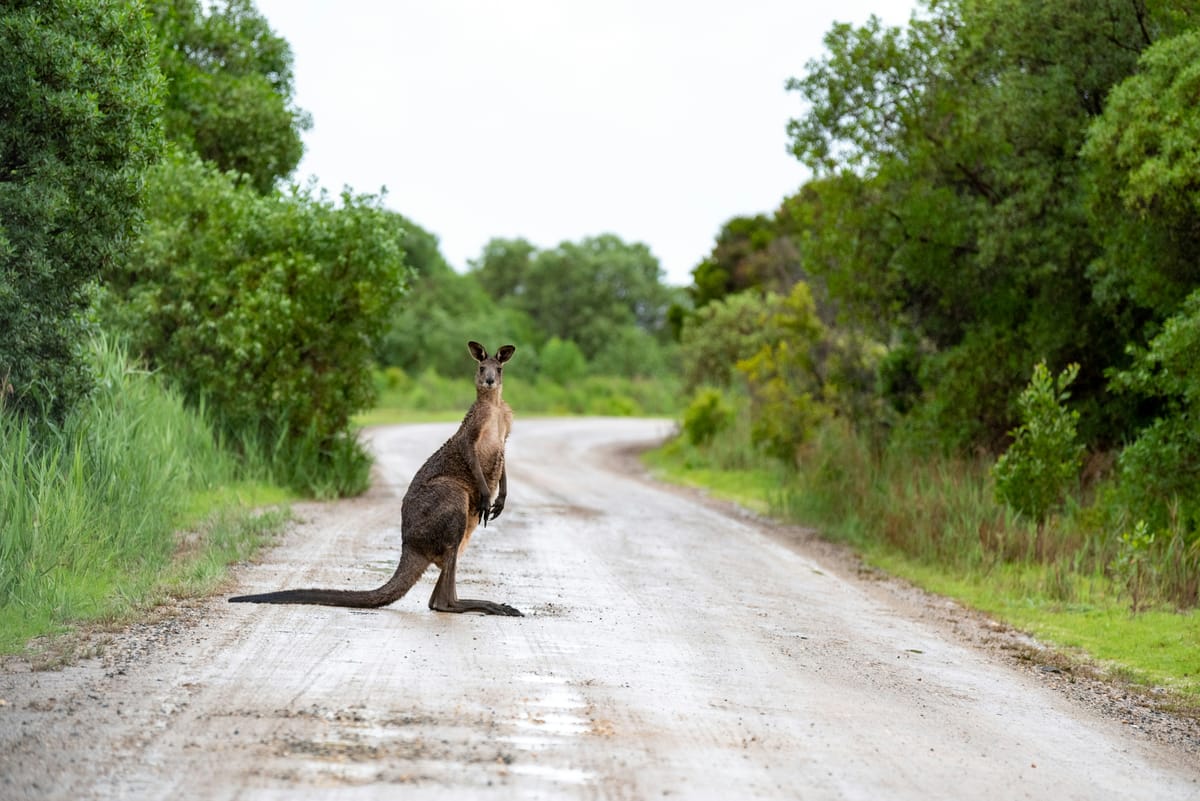Wall of sound saves animals and money

by Cat Holloway /
It’s common: that sinking, guilty feeling of passing wild animals dead on the side of the road. Vastly worse is the experience if your car is one of the thousands on the South Coast every year that collide with a kangaroo, wallaby, wombat or possum.
But near Bawley Point, a ‘virtual fence’ is already saving lives and car repair bills with only three animals killed in almost a month since installation, compared to 59 in exactly the same zone over four previous months.
Council approved Shoalhaven’s first virtual fence late last year and installed it in February for a 12-month trial along a one-kilometre stretch of ‘roadkill hotspot’ on Murramarang Road. The fence consists of posts at 25-metre intervals with solar-powered sensors triggered by vehicle lights to emit light and sound, repelling animals from the road's edge.
Shoalhaven Mayor, Amanda Findley, said she is anticipating success, particularly in reducing harm to animals and people between dusk and dawn.
“The trial represents a proactive step towards enhancing road safety and safeguarding wildlife at Bawley Point,” Mayor Findley said.
“This area is known to have a lot of wildlife fatalities, which puts our motorists at risk of injury.
“Eurobodalla’s trial reduced wildlife strikes from five incidents per week to five incidents in eight months.”
Scientific data estimates that 10 million animals die on Australia’s roads annually. In Tasmania, the gruesome statistic is 32 wildlife road deaths every hour.
So it wasn’t hard for Bawley Point residents to convince Shoalhaven Council to support a virtual fence trial. Two community WIRES volunteers gathered shocking data on local native animal road deaths and studied the most cost-effective strategies likely to save the most lives of wildlife and people.
Long-time Bawley resident, Karen Jones, has documented 230 native animal deaths since June 4, 2023, along just 8km of local road. Ms Jones said it was particularly harrowing to note that 40-50% of animals hit by cars die in the bush and are not easily found on the roadside.
“I’m a realist, some animals will still die,” said Ms Jones, who championed the virtual fence as one important solution to the roadkill problem.
“But if this trial is a success, Council should put these fences all over the place.
“Just the cost savings alone are huge. Council will actually save money.”
In a video summary to Shoalhaven Council last November, Ms Jones said two Council workers had to drive 66km in a truck every second day to collect the bodies.
She noted the safety risk to those workers of pulling onto the side of narrow winding roads as well as the risk and trauma to the 'long-suffering wildlife rescue people called out at midnight’ and the region’s euthanasia shooter tasked with putting injured animals out of their misery.
Ms Jones also discussed how tourists are horrified by the spectre of roadkill and the horrible memory of having a collision while on holiday. But a surprising finding of her data collection was that during cold weather, not peak holiday seasons, animals are more active and at a higher risk of being hit.
She researched the success and failures of 13 virtual fence projects out of more than 40 currently installed around Australia. So convinced was Ms Jones of the merits of the Murramarang Road plan that she offered to pay the $9000 cost of the virtual fence herself. But Shoalhaven Council funded the program without community contribution.
According to Ms Jones, the large percentage of macropods in the area, especially kangaroos and wallabies, is a key justification of the virtual fence as the light and sound emissions do stop roos jumping ahead.
However, the virtual fences only work when cars are travelling at 80 km or slower, making the technology ineffective on major highways.
In areas where wombats are the main roadkill victims, virtual fences are not proving worthwhile as wombats are less bothered by the fences' sound or light.
Among the successful roadkill prevention programs was a Victorian state government-funded virtual fence along 17km of road near Anglesea as well as a reduced dusk-to-dawn speed limit of 65km/h. In only seven months, there were 50% fewer animal road deaths.
Wildlife Safety Solutions, the company installing virtual fences, reports success in saving a wide variety of wild animals, including koalas and Tasmanian devils, from becoming roadkill. The company quotes annual insurance costs from animal collisions at $21 million alongside an estimated $33,000 per year to raise a single orphaned joey. More than half a million wild animals are orphaned every year.

Increasingly, farmers are using virtual fencing to replace electric fences as a more humane and flexible way to manage livestock grazing patterns.
To support the Bawley Point trial’s data collection and identify future hotspots, Shoalhaven community members should use the iNaturalist App and website to document incidents and call Council on 1300 293 111 to report deceased animals.




